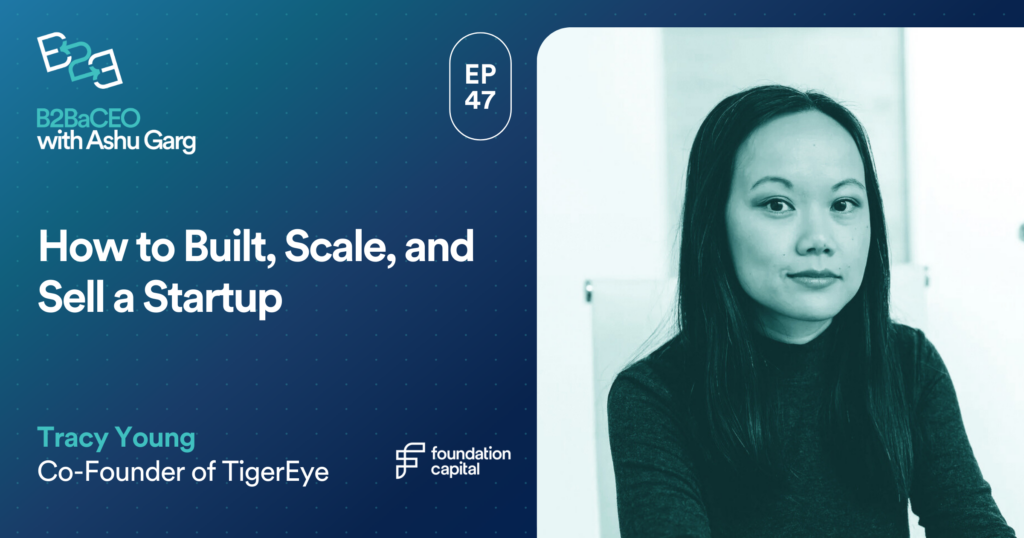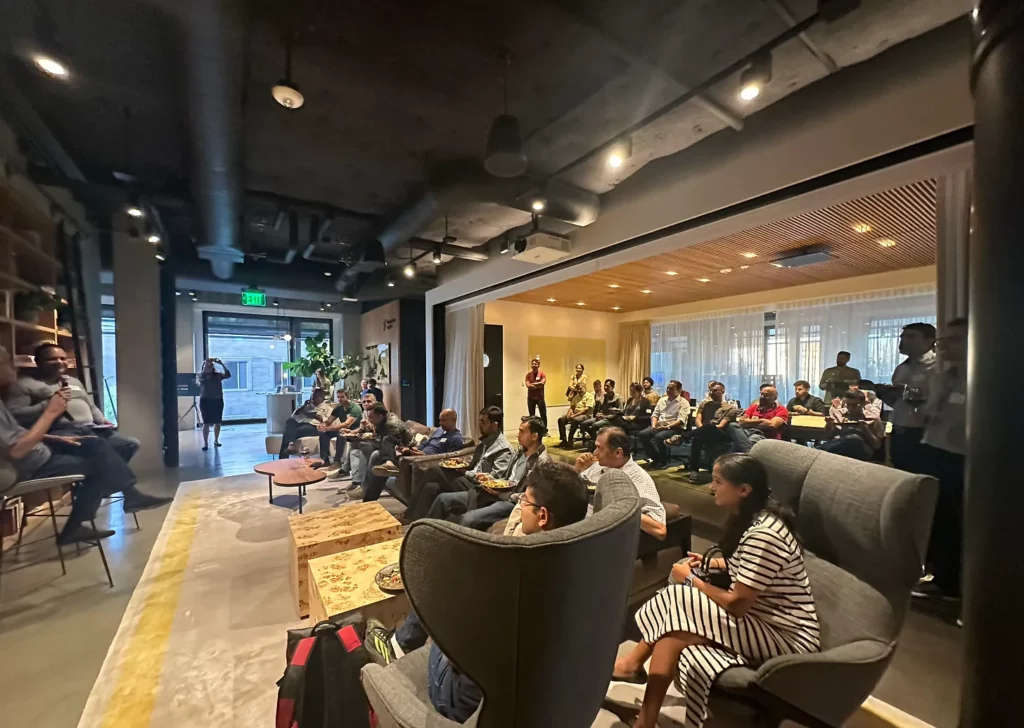My Reflections on My Summer in India’s Silicon Valley
I explain why the enterprise software industry will revolve around two poles—Silicon Valley and Bangalore—by 2030. I podcast with Tracy Young, co-founder of TigerEye and PlanGrid. And more!
09.15.2023 | By: Ashu Garg

In August, I spent three weeks in Bangalore. It was my first meaningful time there since graduating from IIM Bangalore in 1996. Back then, Bangalore was known for its greenery, lakes, and relaxed, retirement town feel. Driving at night from the city center to IIM Bangalore down Bannerghatta Road felt like an adventure. Once when I ran out of gas, I waited hours for help from a passing car. Today, that same road has bumper-to-bumper traffic, a metro overhead, and frequent flyovers.
What’s changed most in Bangalore, though, is the culture. Walking the streets, I felt a tremendous sense of energy, optimism, and ambition. At bars and restaurants, young engineers and aspiring founders eagerly discussed AI advances like RAG and LangChain. At Starbucks, strangers pitched startup ideas after overhearing snippets of conversation between me and my VC/founder friends. It reminded me of the early Internet boom years in Silicon Valley, with a sheer density of technical talent that I’ve not experienced elsewhere.
Today, India is home to the world’s third-largest startup ecosystem after the U.S. and China. GitHub data shows that 9.75 million developers in India now use its platform, with 2.5 million added in 2022: a 35% jump from the previous year. At this pace, India’s GitHub community will match—and perhaps even outnumber—its U.S. counterpart by 2025.
Bangalore sits at the heart of India’s thriving developer ecosystem. Over the past decade, its entrepreneurial community has established deep roots, as seasoned founders support and invest in emerging peers. My time on the ground left me more confident than ever that Bangalore is fast emerging as a formidable rival to U.S. tech hubs like the Bay Area, Seattle, New York, Miami, and Austin.
This leads me to a bold prediction: By 2030, the enterprise software industry will revolve around two poles—Silicon Valley and Bangalore.
From Consumer Beginnings, a Shift to Enterprise
Bangalore’s rise as a tech hub traces back to the 1990s, when multinational companies like Oracle and homegrown IT services firms like Infosys set up centers to tap into abundant local talent. Silicon Valley giants like Google, Facebook, Amazon, and Apple soon followed, establishing their own engineering strongholds in the city. Today, many U.S.-based startups now run their engineering efforts almost exclusively from India. As just one data point, within Foundation’s enterprise portfolio, the count of employees in India now rivals that in the US.
Yet, rather than simply copy Silicon Valley, Bangalore has created its own unique brand of entrepreneurship. E-commerce pioneer Flipkart paved the way, proving that innovation for India’s massive consumer market was possible from Bangalore. After this initial consumer-focused wave, startups in Bangalore are increasingly targeting the B2B market. While consumer digitization fueled the first $100 billion rise of India’s digital economy, business digitization is expected to propel its next 10x increase to $1 trillion by the decade’s end. Established Bangalore startups like Flipkart and InMobi serve as training grounds for a new generation of entrepreneurs focused on enterprise tech, from devtools to data infra. Flipkart alumni alone have founded 318 startups and raised $6.77 billion in funding.
Investors have taken note. In the past five years, over 1,600 SaaS startups in India have secured venture capital funding. Of these startups, 11 have reached $100 million+ in ARR. Propelled by this momentum, Bangalore is poised to stand alongside San Francisco as a global tech leader. By 2030, industry analysts expect India’s SaaS sector to reach $50 billion in ARR, up from $13 billion in 2022, and to account for over 8% of the global SaaS market. In enterprise software’s next chapter, Bangalore may well be the protagonist.
This is not just a story of supply. Demand for enterprise software in India is accelerating too. India-based businesses now represent a sizable and fast-growing market for SaaS. At Foundation, we’ve seen this firsthand in our portfolio companies like Fortanix, Skyflow, and OpsMx, where many of the teams leading their POCs—the “hands on the keyboard”—are based in India.
The Digital Rails Driving Startup Growth
Bangalore’s thriving startup scene owes much to the “India Stack”: a suite of digital identity, payments, and data management solutions. At its core is Aadhaar, a biometric digital ID program launched in 2010 that now covers nearly all of the country’s citizens. Building on Aadhaar, the government launched a Unified Payments Interface (UPI) in 2016 to enable digital payments between bank accounts using QR codes and phone numbers. The stack’s third pillar is Digilocker, which gives Indians digital access to essential documents through their Aadhaar IDs.
Today, India has the world’s highest volume of digital payments. To my surprise, even street beggars accept digital payments on their phones. Over 66% of Indians own smartphones: a figure that’s rising steadily. According to the Bureau of India Standards, the India Stack has achieved in a decade what would have taken nearly 50 years by more traditional means.
Critically for startups, the India stack offers a set of standardized APIs for streamlined digital identity verification, payments, and data sharing. New initiatives like the Open Network for Digital Commerce (ONDC) aim to facilitate open e-commerce across platforms, while the Open Credit Enablement Network (OCEN) will enable frictionless credit flows. These advances are catalyzing additional innovations in authentication, credit underwriting, and insurance, all of which promise to supercharge India’s startup ecosystem.
If you’re curious to learn more, I recommend this recent presentation and talk by Nandan Nilekani, co-founder and non-executive chairman of Infosys. “India is the only country in the world building population-scale APIs and open networks to transform society. […] Each change acts as input to the next, leading to combinatorial innovation,” he explains. Gradually, then seemingly all at once, these developments—nationwide digital infrastructure, rising smartphone and Internet penetration, and a growing startup economy—will lead India to become a $10 trillion economy by 2035.
Soft(ware) Power
Bangalore’s fortunes are, of course, entwined with those of India, which now stands at an inflection point. Software will be the crucial driver behind India’s ascent, much as manufacturing propelled China’s rise. India’s $245 billion IT industry already accounts for nearly 8% of its GDP. But these are still early days. As software (and now AI!) continues to eat the world, India’s developers are poised to build digital products and platforms that will disrupt industry after industry. Just as Chinese factories powered global manufacturing, India’s software talent will drive the digital transformation of the global economy.
Several tailwinds are propelling India forward. It’s currently the world’s fastest-growing major economy, with a year-over-year GDP growth of 7.8% in Q2 2023. Its economy draws strength from its growing population, which recently overtook China’s as the world’s largest. With a median age of only 28 years and over 50% of its population under 30, India is primed to reap a “demographic dividend” that will energize its economy for many years to come.
India’s Achilles heel continues to be its weak real-world infrastructure, as anyone who’s sat in stopped Bangalore traffic can attest. Fortunately, spending on transportation networks is set to reach 1.7% of GDP this year, nearly double U.S. and European levels. India is also pouring money into clean energy, with $200 billion of private investment expected in solar, wind, and hydro power over the next decade. These are all steps in the right direction, and hopefully we’ll see the impact in a few years.
With the right policies and investments, India can replicate China’s growth model in a uniquely Indian way: namely, through software rather than manufacturing. It’s clear to me that lines of code, not assembly lines, will be the “made in India” hallmark that powers innovation globally for decades to come.
Why Bangalore, and Why Now?
So, what do all of these shifts—economic, demographic, geopolitical, and otherwise—mean for Bangalore’s startup scene? Why does Bangalore specifically hold such promise as a dual builder of and market for enterprise software? In my view, it’s the combination of deep technical talent, a growing entrepreneurial community, robust infrastructure commitments, and India’s upward global trajectory that position Bangalore as the next epicenter of global tech innovation, side by side with Silicon Valley.
If we accept that my prediction may come true, it raises critical questions:
- Will this be a zero-sum game, or can both hubs collaborate to push innovation forward? Bangalore’s rise need not come at Silicon Valley’s expense. With distinct strengths, the two hubs can complement each other, expanding the frontiers of enterprise software, AI, and more.
- What unique competitive advantages will Bangalore develop? Capital-efficient engineering and expertise in specific areas of enterprise tech are two possibilities. Bangalore may also become a launchpad for “made-for-India” solutions that gain adoption globally.
- How will talent flows evolve? Will we see more brain circulation and mobility between the two hubs? Or will Bangalore increasingly retain top Indian talent as more engineers choose to build their careers at home?
- Will cross-border investments accelerate? As Bangalore unicorns multiply, U.S. VCs may place bigger bets on the tech ecosystem in India.
It’s common to overstate short-term changes and downplay long-term effects. Not every new development signals a massive disruption and paradigm shift. But, after this summer, at least one conclusion seems very safe to make: Don’t bet against Bangalore.
Celebrating Databricks’ Latest Funding Round
As loyal listeners and readers of B2BaCEO know, I’m a proud seed investor in Databricks and a friend of three of the company’s co-founders, Ion Stoica, Ali Ghodsi, and Matei Zaharia. I’m grateful to also be an investor in two of Ion’s other companies, Conviva and Anyscale, and to have had the pleasure of hosting him on the B2BaCEO podcast. Ali, Databricks’ CEO, has been a three–time podcast guest, while CTO Matei joined me for an insightful chat in June and is speaking at our CEO dinner later this month.
I’ve long believed in Databricks’ vision, so I couldn’t be more excited to share that they’ve secured an additional $500 million in funding. This brings their valuation to $43 billion, based on Q2 revenue of over $1.5 billion. It’s been a true thrill to watch the company evolve from a data and ML software solution into a full-stack platform for all things enterprise AI. Congratulations Ion, Ali, Matei, and the entire Databricks’ team!
From PlanGrid to TigerEye: Tracy Young on Her Founder Journey
My guest on the B2BaCEO podcast this month is Tracy Young, co-founder and former CEO of PlanGrid, a productivity tool for construction companies. Tracy has an incredible founder story. She went through Y Combinator, dealt with the loss of a cofounder to cancer, and eventually sold PlanGrid to Autodesk for $875 million. In the process, she picked up valuable lessons that other founders and CEOs can learn from. We talk openly about the ups and downs of her journey, specifically:
- How Tracy found product-market fit by solving problems she experienced firsthand in the construction industry
- Creative approaches to monetization that helped PlanGrid gain early traction
- Managing the growing pains that come with rapidly scaling a startup
- Getting real value out of board meetings (instead of just trying to impress investors)
- Knowing when it’s time to sell your company
I found our conversation incredibly inspiring, and I think you will too! Also, if you’re curious to hear more from Tracy, my partner, Joanne, interviewed her in Forbes earlier this year.

Notes from Our Annual IIT Alumni Dinner
This Tuesday, we held our annual IIT alumni dinner at our Palo Alto office. More than forty IIT grads joined for a lively evening of networking and discussion. One of the highlights was my panel discussion with Rakesh Gangwal, the co-founder of IndiGo Airlines, which now commands nearly 65% of India’s domestic aviation market. We covered a lot of ground, including the importance of taking bold bets when structuring deals and why integrity is the most important thing in life. Sincere thanks to Rakesh and everyone who attended. It was a privilege to host this special community of builders and enterprise leaders, and I look forward to our next gathering!

Portco spotlight: Kombai
Over the last decade, user experience has become increasingly mission-critical for businesses of all sizes. To build this experience, developers have to manually translate UI designs into code: a frustrating and incredibly time-consuming process. Kombai is the world’s first generative AI model that’s purpose-built to understand and code UI designs like humans. Developers can prompt the model with their design files in Figma and get high-quality UI code in seconds. With the help of Kombai, dev teams can build UI anywhere from two to 10x faster, depending on their tech stack, without creating any new work for the design teams. After launching their public research preview on ProductHunt, Kombai became the #1 product of the month and remains the #1 devtool for 2023 to date! Check them out here.
Published on 09.15.2023
Written by Ashu Garg

